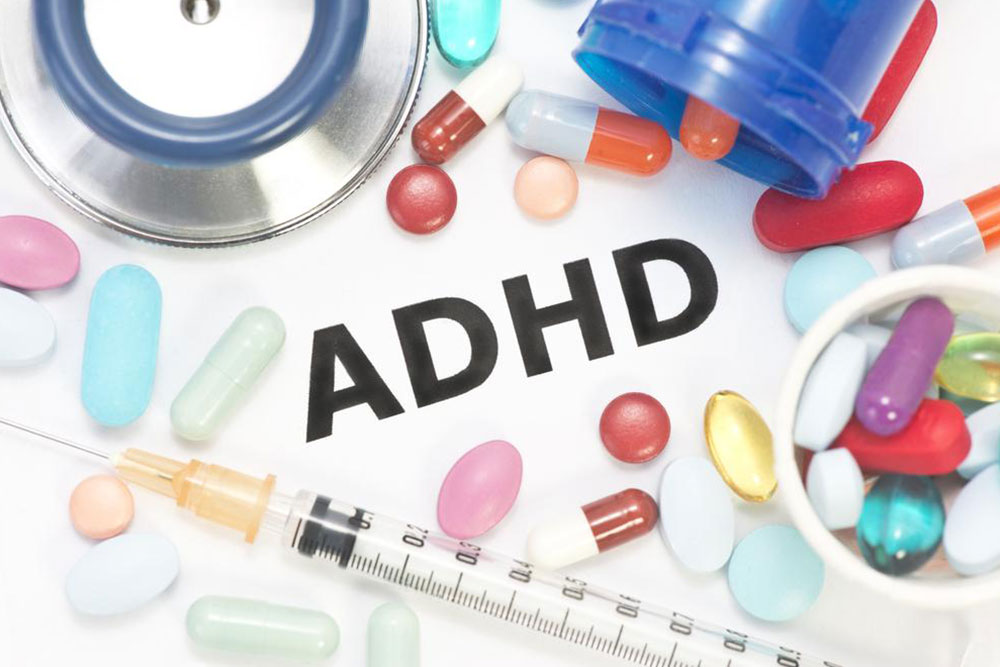Comprehensive Guide to ADHD: Recognizing Symptoms, Understanding Causes, and Effective Treatment Strategies
This comprehensive guide explores ADHD's symptoms, causes, and treatment options, offering valuable insights for individuals and caregivers. From understanding behavioral signs to exploring medication and therapy options, the article emphasizes early diagnosis and personalized management strategies for improved quality of life. With ongoing research and multidisciplinary approaches, managing ADHD effectively is increasingly feasible, helping individuals thrive in various aspects of life.

Comprehensive Guide to ADHD: Recognizing Symptoms, Understanding Causes, and Effective Treatment Strategies
Attention-Deficit Hyperactivity Disorder (ADHD) is a neurological and behavioral condition that affects millions of children and adults worldwide. This disorder is characterized by a persistent pattern of inattention, hyperactivity, and impulsivity that can interfere significantly with daily life, education, work, and social interactions. Understanding ADHD in depth can help individuals, parents, educators, and healthcare providers manage the challenges associated with it more effectively. This comprehensive guide explores the various facets of ADHD, including its symptoms, potential causes, diagnosis process, and a broad spectrum of treatment options designed to improve quality of life.
Understanding the Root Causes of ADHD
Despite extensive research, the precise cause of ADHD remains somewhat elusive. However, scientists have identified several factors that appear to influence its development. Genetics play a crucial role, with many cases running in families, indicating a hereditary component. Specific genes related to neurotransmitter regulation, particularly dopamine, have been linked to the disorder, suggesting a genetic predisposition.
Environmental factors are also significant. Prenatal exposure to harmful substances such as alcohol, tobacco, or certain drugs can increase the risk of developing ADHD. Additionally, exposure to environmental toxins like lead, especially in early childhood, has been associated with increased incidence. Brain injuries, particularly those affecting the frontal cortex and other regions responsible for executive functions, may also contribute to symptoms. Socioeconomic challenges, family dynamics, and prenatal stress can further influence the onset and severity of ADHD.
Research continues to explore the complex interplay of these factors, aiming to uncover clearer pathways for prevention and intervention. The multifactorial nature of ADHD underscores the importance of comprehensive assessments to identify individual risk factors and tailor personalized treatment plans.
Recognizing the Symptoms of ADHD
ADHD manifests through a spectrum of behavioral signs that can vary in intensity and presentation. These symptoms are typically categorized into inattention, hyperactivity, and impulsivity, each impacting different aspects of daily functioning.
Inattention symptoms often include:
Difficulty sustaining focus on tasks, especially repetitive or boring activities
Making careless mistakes in schoolwork or other tasks
Challenges following instructions or completing assignments
Frequently losing objects essential for tasks, such as keys, books, or tools
Becoming easily distracted by unrelated stimuli or thoughts
Avoiding tasks that require prolonged mental effort, like reading or detailed projects
Hyperactivity symptoms may involve:
Feeling restless and constantly moving, even when sitting quietly is expected
Fidgeting, tapping hands or feet, or squirming in seats
Difficulty remaining seated in situations where staying still is necessary
Excessive talking and interrupting conversations or activities
Difficulty engaging in leisure activities quietly
Impulsivity symptoms include:
Impulsive decision-making without considering consequences
Interrupting others during conversations or activities
Difficulty waiting for one's turn in group scenarios
Acting quickly on urges that may lead to risky behaviors
These behaviors can be observed in various settings—from classrooms and workplaces to social gatherings—and often lead to academic, occupational, or interpersonal challenges. It is important to recognize that these symptoms must be persistent and impairing to warrant an ADHD diagnosis, and they may vary with age and individual circumstances.
Diagnosing ADHD: The Process and Criteria
Diagnosing ADHD involves a thorough evaluation conducted by qualified healthcare providers, including psychologists, psychiatrists, or pediatricians. The process typically includes clinical interviews, behavioral assessments, and gathering information from parents, teachers, or employers.
To meet diagnostic criteria, symptoms must have persisted for at least six months and be evident in two or more settings, such as home and school or work. The symptoms must cause significant impairment in functioning and not be better explained by other mental health conditions or environmental factors.
Standardized rating scales and checklists are often employed to quantify the severity of symptoms. Additionally, cognitive testing may help rule out learning disabilities or other issues that could mimic ADHD symptoms. The goal of diagnosis is to distinguish ADHD from other behavioral or psychological conditions and to develop an appropriate treatment plan tailored to the individual's needs.
Effective Treatment Strategies for ADHD
While there is currently no cure for ADHD, various treatment options can significantly mitigate symptoms and enhance functioning. A multidisciplinary approach often yields the best outcomes, combining medication, behavioral interventions, and environmental modifications.
Medication Therapy
Medications are a cornerstone of ADHD treatment and are categorized into stimulants and non-stimulants. Stimulants, such as methylphenidate and amphetamines, are the most widely prescribed and have demonstrated effectiveness in reducing core symptoms like hyperactivity and impulsivity. They work by increasing dopamine and norepinephrine in the brain, improving attention and executive function.
Non-stimulant medications, including atomoxetine and guanfacine, are suitable options for individuals who do not tolerate stimulants or have specific medical conditions. These medications can help improve focus and reduce impulsivity without some of the side effects associated with stimulants.
It is essential for medication management to be closely monitored by healthcare providers to optimize benefits and minimize adverse effects. Regular follow-ups enable adjustments in dosage and medication type as needed.
Behavioral and Psychotherapeutic Interventions
Behavioral therapy plays a vital role in training individuals with ADHD to develop positive habits, organizational skills, and emotional regulation. Techniques such as cognitive-behavioral therapy (CBT) help modify negative thought patterns and behaviors, fostering better coping strategies.
Parent training programs are also effective, empowering caregivers to implement consistent discipline strategies, establish routines, and support skill development at home. For adults, coaching and counseling can address personal challenges related to ADHD, including time management, stress handling, and relationship management.
School-based interventions are crucial for children. These may include individualized education plans (IEPs), classroom accommodations, and behavioral support strategies to promote learning and social integration.
Creating a Supportive Environment
Adjustments in the environment can significantly improve the management of ADHD symptoms. Simple changes such as reducing distractions, using organizational tools, and setting clear rules and routines help individuals stay focused and productive. Support from family, teachers, employers, and peer groups is vital for ongoing success.
In conclusion, understanding ADHD encompasses recognizing its complex causes, diverse symptoms, and the wide array of available treatments. Early diagnosis and personalized intervention strategies can empower individuals to manage symptoms effectively, leading to improved academic, professional, and social outcomes. As research advances, new therapies and insights continue to emerge, offering hope for better management options in the future.





